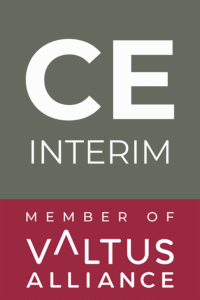Not enough time to read the full article? Listen to the summary in 2 minutes.
The Central and Eastern Europe (CEE) region, with its vibrant cultures, strategic location, and growing economies, offers expansive opportunities for business expansion. This diverse area, from the Baltic shores to the Balkan Peninsula, is ideal for businesses aiming to diversify and expand. Known for dynamic economies, strategic advantages, and a highly educated workforce, the CEE region is perfect for top businesses looking to grow. Business Growth in Central and Eastern Europe is driven by these unique strengths, making it a prime destination for companies seeking new markets and growth potential.
This blog provides a comprehensive overview of the opportunities within the CEE, effective strategies for market entry, and practical advice for overcoming the region’s business challenges.
I. Business Opportunities in the CEE Region
Diverse Economic Landscape:
The CEE region’s economic diversity is marked by varying stages of development and industrial focus. Countries like Poland and the Czech Republic boast well-developed industrial sectors and robust infrastructure, conducive to manufacturing and heavy industries. Conversely, nations such as Romania and Bulgaria offer growing IT and communications sectors propelled by extensive government incentives and a burgeoning workforce of tech graduates.
Did you know that Romania is the 3rd best country in the world when it comes to broadband internet download speed with a median of 275 Mbit/s. Just for a comparison, if you add all three countries Germany (91 Mbit/s), Italy (81 Mbit/s), Austria (93 Mbit/s), together, Romania will still have a higher internet connection download speed.
Investment Inflows and Economic Indicators
Foreign Direct Investment (FDI) inflows in the CEE have been substantial, with Poland receiving approximately $13.9 billion and Hungary around $5.2 billion in 2018 alone, according to the UNCTAD World Investment Report. Such substantial investments reflect the region’s economic stability and investor confidence, highlighting the Business Growth in Central and Eastern Europe.
Moreover, countries like Slovakia and Estonia have demonstrated impressive agility in digital transformation, ranking high on the European Commission’s Digital Economy and Society Index (DESI), further attracting investments in tech-oriented sectors.
Robust Economic Growth
Countries in the CEE region have shown remarkable economic resilience and growth, often outpacing their Western European counterparts. For instance, Poland and Romania have experienced GDP growth rates averaging around 3-4% in recent years, significantly above the EU average, which typically hovers around 1-2%. Such growth presents lucrative opportunities in various sectors, including technology, manufacturing, and services, highlighting the significant Business Growth in Central and Eastern Europe.
Strategic Location for Business
The CEE region’s strategic location offers logistical advantages that are hard to overlook. Positioned between Western Europe and the burgeoning markets of Asia, countries like Poland and the Czech Republic serve as critical logistics and distribution hubs. For example, Poland’s central location in Europe makes it an ideal base for logistics operations, a fact underscored by players like Amazon or Hermes Fulfillment choosing it as a site for one of its largest fulfillment centers. Did you know that Poland is the second most preferred location for Shared Service Centers worldwide ?
Skilled Workforce
The region’s high literacy rate and focus on engineering and IT make it a talent hub for industries like IT, automotive, and aerospace.
This skilled workforce underpins the significant Business Growth in Central and Eastern Europe, with countries like Estonia, often referred to as e-Estonia, exemplifying this with its tech-savvy workforce and status as one of the most digitally advanced societies in the world
Do you use BOLT? Bolt is an Estonian mobility company that offers ride-hailing, micromobility rental, food and grocery delivery (via the Bolt Foodapp), and carsharing services.
The company is headquartered in Tallinn and operates in over 500 cities in more than 45 countries in Europe, Africa, Western Asia and Latin America. The company has more than 150 million customers and more than 3 million driver and courier partners.[2]
II. Strategic Market Entry in the CEE
Localized Strategies for Diverse Markets
Success in business expansion in CEE requires tailored approaches acknowledging each country’s unique market demands and consumer behaviors. For instance, retail giants like Tesco have adapted product offerings and marketing strategies to align with local tastes across Hungary, Slovakia, and Poland, ensuring consumer satisfaction and loyalty. Entering the Central and Eastern Europe countries often requires forming strategic partnerships with local firms.
These alliances can help foreign businesses navigate the complexities of local regulations and consumer preferences. For instance, successful companies often collaborate with local distributors and suppliers to streamline their operations and enhance market penetration.
Understanding Market Variability
Each CEE country features unique market dynamics, making it crucial for investors to understand local conditions comprehensively. Czech Republic excels in automotive and electronics, while Romania boosts its IT sector with governmental support and STEM graduates.
Case Study: Renault in Romania
Renault’s success with its subsidiary Dacia is a stellar example of effective market entry in CEE. Renault revitalized Dacia, entering the European market with affordable models, showing a deep understanding of local dynamics. This highlights Renault as one of the top businesses in CEE. Read the full story.
III. Overcoming Challenges in the CEE
Navigating Complex Regulatory Environments
CEE countries align with EU laws but maintain unique regulatory frameworks, necessitating careful navigation.
Labor regulations in CEE countries may have stricter union interactions and worker protections compared to other EU nations.
Amazon works with labor unions and adjusts policies to comply with local laws for smooth operations.
Cultural Sensitivity and Language Diversity
Effective communication and marketing in the CEE require an acute awareness of the linguistic and cultural diversity within the region. Consumer goods companies, like Procter & Gamble, adapt ads for CEE countries, boosting brand resonance and trust.
Geopolitics in and around CEE:
The CEE region has a complex geopolitical landscape shaped by its history, location, and relationships with neighboring countries. The region has been heavily influenced by the Soviet Union’s presence during the Cold War and subsequent transitions towards democracy and market economy systems.
With recent war between Russia and Ukraine has led to rise tensions and conflicts over territories such as Crimea. These political tensions can impact businesses operating in the region, creating potential risks for investments and operations.
However, the CEE region also benefits from its relationships with other EU member states, providing access to a larger market and opportunities for cross-border cooperation
IV. Economic Indicators
Poland’s GDP Growth
Poland has seen a GDP growth of over 4% in recent years, driven by its robust industrial sector and foreign investments.
Tech Boom in Estonia
Known as the Silicon Valley of Europe, Estonia offers significant opportunities in tech, with a highly supportive regulatory framework for startups.
V. What is the best and swift way to Enter into CEE Region?
Training your existing employees and reaping the fruits requires intense harvesting of company leaders’ time, energy, and money in research, planning, forming, working, and executing. Here’s how leading global companies expand quickly and efficiently.
While the in-house team commits to their regular and ad hoc work, hiring Interim Market Entry Executives is the best and most successful strategy, as these leaders are experts in market penetration. Along with achieving the targeted goals, Interim Executives leave a legacy behind with the in-house team post their tenure.
What is Interim Market Entry Management?
Interim Market Entry Management provides a solution by offering experienced executives on a temporary basis to address critical market entry needs. These professionals bring specialized skills to lead market analyses, design entry strategies, and execute market penetration plans without the long-term commitment of a permanent hire. [hyperlink to Function page]
Why Global Companies prefer partnering with CE Interim?
At CE Interim, we are committed to your success. Our team of Cross-cultural Interim Managers and Industry Experts provide strategic guidance and hands-on support to help you achieve your business objectives. Here’s why you should choose us:
- Proven Expertise: Over 10 years of experience in executive interim management.
- Global Reach: Operations in over 20 countries worldwide. Especially CEE, Dubai, Saudi Arabia, Germany, UK, USA
- Industry Leaders: A global pool of over 60,000 industry experts and interim managers.
- Client-Centric Approach: Customized solutions tailored to your unique needs.
- Successful Track Record: Numerous successful projects and satisfied clients.
Our Methodology: Diagnostic -> Selection -> Briefing -> Onboarding -> Delivery -> Offboarding
VI. Success Stories
IKEA in Poland
IKEA tailored its strategies to align with local preferences and established a significant manufacturing presence, reducing costs and ingraining its brand within local markets.
Read full report by IKEA on it’s success in Poland: Read
Deutsche Telekom in Slovakia
By acquiring Slovak Telekom, Deutsche Telekom leveraged local infrastructure and expertise, significantly boosting its operations across the region.
Here’s the success report of Deutsche Telekom in Europe: Read
Erste Group Bank AG in CEE
Austria-based Erste Group Bank AG has successfully expanded into multiple CEE countries, including the Czech Republic, Slovakia, and Serbia, by offering localized banking services that cater to the specific financial needs and contexts of each country. This strategy has not only broadened their market presence but also ingrained them deeply into the local financial ecosystems.
Read full article of Erste Group Bank AG winning the “Best Bank Award” in 2022 from Euromoney: Read.
Conclusion
The expansion into the CEE region, with its strategic advantages and dynamic markets, presents significant opportunities for businesses. The key to successful entry and growth lies in understanding the local markets, leveraging strategic partnerships, and navigating the regulatory landscape effectively.
The diverse examples and success stories provided herein underscore the importance of a nuanced approach to global expansion, emphasizing strategic planning and local adaptation. Businesses that adeptly navigate these areas can tap into the significant growth opportunities in Central and Eastern Europe, establishing a robust and competitive presence in the European market.
FAQs
1. What is the CEE Region? What are the CEE Countries?
The CEE (Central and Eastern Europe) region includes Poland, Hungary, Czech Republic, Slovakia, Slovenia, Romania, Bulgaria, Croatia, Serbia, Montenegro, Bosnia and Herzegovina, Albania, North Macedonia, and Kosovo.
2. What Industries are Strong in the CEE Region?
The CEE region excels in automotive, manufacturing, IT and digital services, telecommunications, and banking. It also boasts a growing startup ecosystem, especially in Poland and Hungary. Researching the local market is crucial for identifying dominant and emerging industries.
3. What is Famous in the CEE Region?
The CEE region is renowned for its rich cultural heritage, diverse landscapes, and unique cuisine. Popular destinations include Prague, Budapest, Krakow, and Dubrovnik. The region is also known for its arts, literature, and traditional handicrafts like pottery and embroidery.
4. What Languages are Spoken in the CEE Region?
The CEE region is linguistically diverse with languages like Polish, Czech, Slovak, Hungarian, Slovenian, Romanian, Bulgarian, Croatian, and Serbian. English is widely spoken in business settings. Understanding the language landscape is essential for businesses.
5. What is the Most Famous Food in the CEE Region?
The CEE region offers diverse culinary delights. Popular dishes include goulash (Hungary), pierogi (Poland), cevapi (Serbia), sarma (Croatia), and musaka (Bulgaria). Staples include bread, potatoes, and meat, with desserts like strudel and baklava also common.





